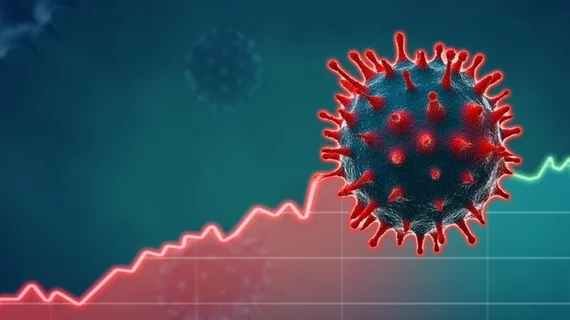Radiology practices across the U.S. are creating game plans to reopen and resume regular services as their states enter the next phase of COVID recovery. But leaders at one large imaging institution say it’s essential to also establish a carefully considered review process to gauge how the practice is performing during the relaunch.
That’s one of the key takeaways from a new analysis, published this month in Clinical Imaging. As the state of California has navigated step two of the governor’s reopening roadmap, Keck Medicine of USC has implemented a “phased and triaged” approach to working through its own deferred care backlog.
Along with performing regular risk assessments of patients and staff, and creating a program to monitor disease among radiology staff, experts emphasized the importance of having a review system. This could serve to assess performance during the ramp up, noted Saif Azam, a USC medical student, and colleagues in the institution’s Department of Radiology.
“As healthcare workers inherently place themselves at risk by rising to meet these demands, there must be contingency plans in place for practices to adjust rates of imaging in response to even a single case of COVID-19 appearing among staff,” Saif and co-authors wrote June 1. “The safety of both patients and employees must be prioritized and may require day-to-day changes in services and as leaders strive to achieve this delicate balance.”
Radiology planners can start by identifying benchmarks of capacity derived from historical levels prior to the pandemic, along with current capacity while care was deferred. Saif et al. suggested tracking incremental increases in volume at, say, 20% coupled with review periods established in increments of four to six weeks.
“The duration under review should be sufficient in length to allow for capture of new COVID-19 infections in staff, to assess the rate of new COVID-19 infections in the community, and to determine if the burn rate of [personal protective equipment] or the ability to maintain equipment is exceeded,” the team suggested.
Practice leaders can set thresholds that would trigger a “capacity review process,” that might result in scaling back to levels in the previous period. For purposes of discussion, the authors suggested four possible thresholds—a new COVID diagnosis among the healthcare staff; total number of diagnosed inpatients at the hospital is greater than 10; PPE reserves have fallen below a two-week supply; or a vendor has become unable to service imaging equipment.
Failure to meet any of these measures would then launch a review process and return the practice to previous capacity, Saif wrote. Radiology staffers may not be familiar with one modality’s maximum use. And pacing/risk profiles will vary from one machine to the next. “As such, this incremental process should take place in each section until their maximum capacity is established,” they added.
Phase two operations using these processes could last for as long as two years, if COVID-19 follows patterns similar to the 1918 influenza pandemic. This will be a learning process and the USC radiology team emphasized the importance of interaction, even if it is something of a cliché.
“To say that communication is key risks hackneyed understatement, but it may well prove to be the single most important determinant of success or failure,” they wrote. “Stakes are high for staff, referring providers, and patients and buy-in to your process will be a necessary criterion for its success.”
There’s lots more to digest in the analysis. Read the rest in Clinical Imaging for free here.

